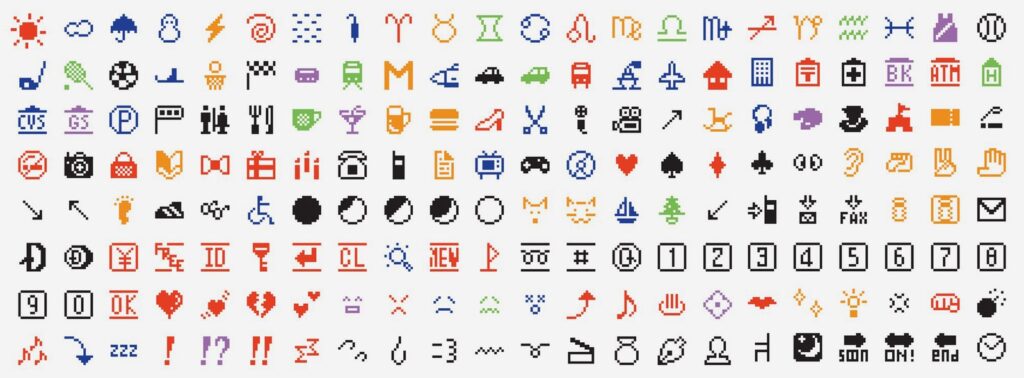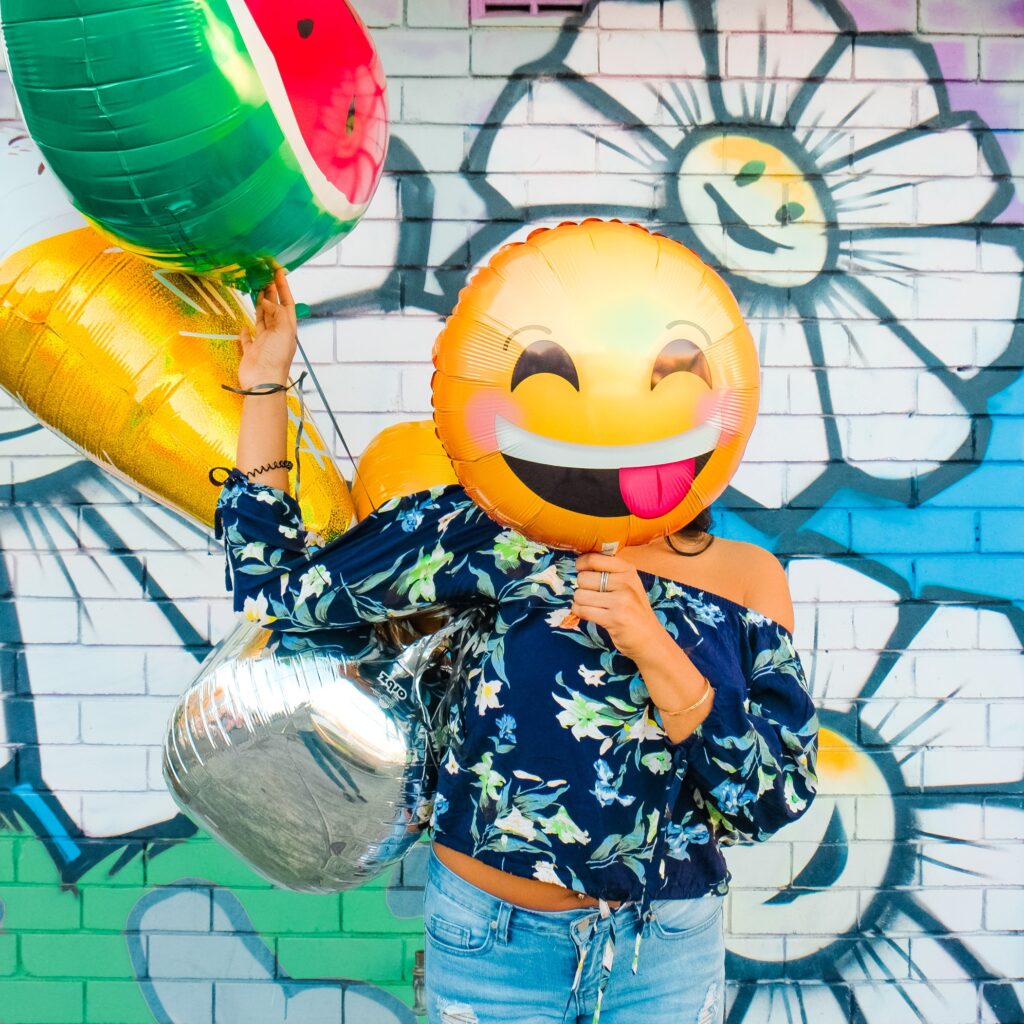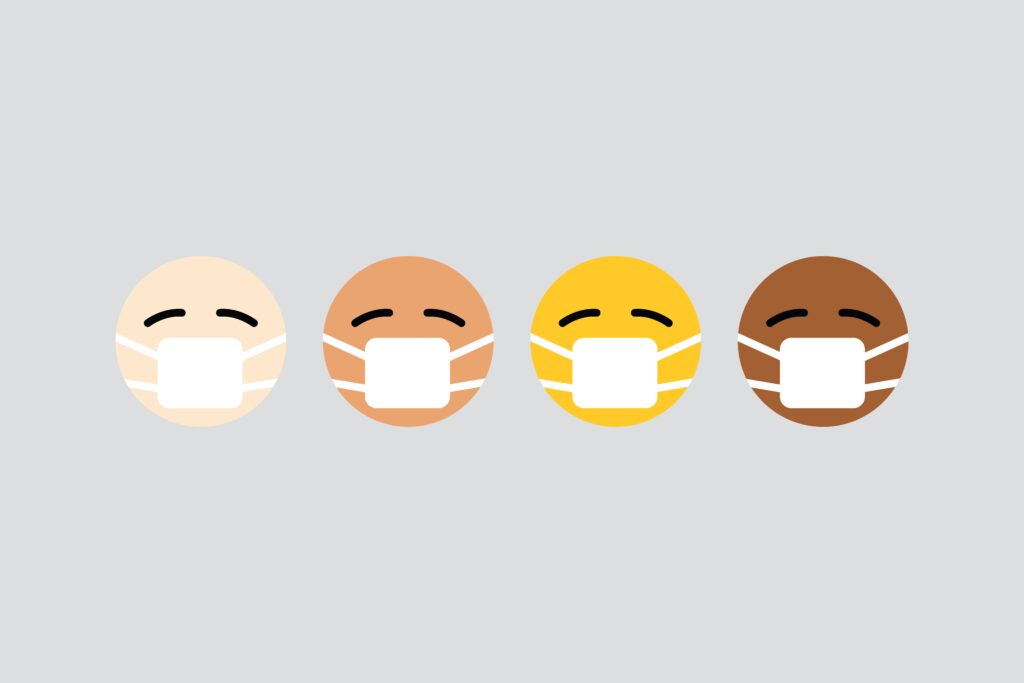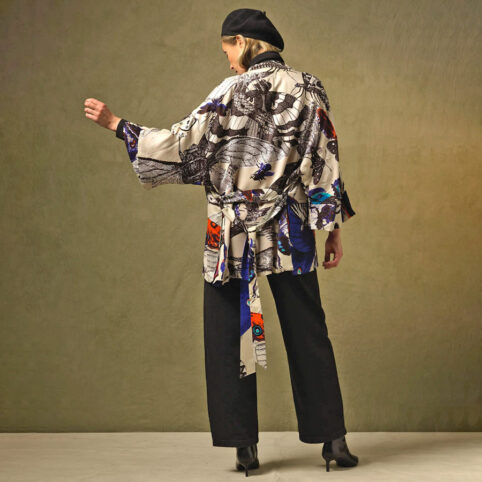Emojis – the most universal language of all
Emojis first appeared on Japanese mobile phones in the late ’90s. In 2015, the Oxford dictionary acknowledged ’emoji’ as the word of the year. The tiny characters—from 😜 to 🎉 to 💩—represent the first language born of the digital world, designed to add emotion to an otherwise flat text. They’re incredibly universal: see below for some insights.
A quick history
Who remembers the days when 🙂 and 8-D were the perfectly normal ways of expressing happiness. Later on, 😉 has become the first digital expression of sarcasm. And the creative internet surfers even invented how to share your ambivalence with the ¯_(ツ)_/¯ face.
The game changed in 1999 when Japanese artist Kurita decided to try to convey more complicated concepts in visuals rather than just a smiley face. There were characters to show the weather, traffic, technology, and all the phases of the moon. For the first time, emoji offered a way to add emotional subtext to a message. “I understand” might sound cold or passive on its own, but add ❤️ and the message offered a sense of warmth and sympathy. It was the beginning of a new visual language.

Fast forward 20 years……..
Now, a total of six billion emojis or stickers are flying around the world every day on mobile messaging apps.
As emojis grow more and more popular with social media users and marketers, they’re a phenomenon all on their own. Large corporations devote a whole department to perfecting their brand tone of voice, including the art of using the right emojis. Some might think that it is unnecessary but little cute faces and images have more power than you might think.
The art of perfecting the Emoji language
If you look at every single emoticon, its genius design perfectly depicts its meaning and conveyed emotion. However, like with any other language, emojis constantly evolve and adapt to the current trends and society. For this reason, we keep seeing new faces, diverse colour shades, and more advanced expressions, that allow us to talk about relevant global issues in emoji language.
What is interesting is that scientists have discovered that when we look at a smiley face online, the same parts of the brain are activated as when we look at a real human face. Our mood changes, and we might even alter our facial expressions to match the emotion of the emoticon.
What’s really interesting is that this is not something we’re born with. It’s something our brains have developed in the last few years with the emergence of emoticons and emojis. Essentially, social media culture has created a new brain pattern within us.
As great as it is, talking in emojis can be as difficult as expressing yourself in words. Sometimes say the wrong thing – some more often than others, but that happens even unintentionally. So, just as a smiley emoji can make us happy, equally – a wrong emoji can trigger sadness and disappointment.
Have a go………
So, if you’re not in the emojis game yet, join in and explore the endless world of possibilities. Virtual expressions and emotions. You just need to be sure the emoji means what you think it does.








